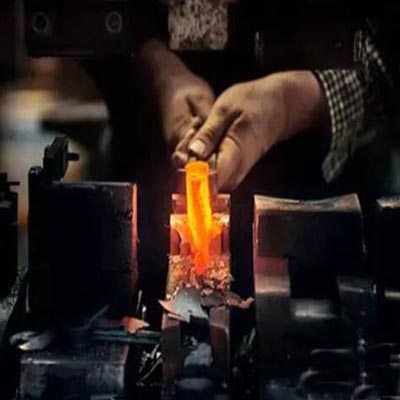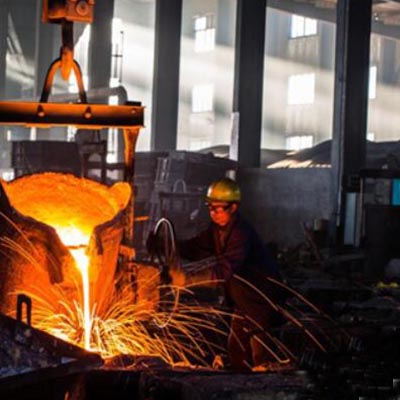First, introduce casting and forging
Casting: The molten liquid metal fills the mold cavity and cools down, and pores are easy to form in the middle of the workpiece; the metal is heated and melted, poured into a sand mold or mold, and solidified into an utensil after cooling.
Forging: It is mainly formed by extrusion at high temperature, which can refine the grains in the workpiece; by hammering and other methods, the metal material in the plastic state becomes a workpiece with a certain shape and size, and changes it physical properties.
Second, the difference between casting and forging
1. The production process is different
Casting is one-time forming. After the metal is melted into a liquid, it is cast into a casting cavity suitable for the shape of the part, and after it is cooled, solidified and cleaned, the processing method of obtaining the part or blank. The casting major focuses on the metal smelting process and the control of the process during the casting process.
Forging is slow forming. Using forging machinery to apply pressure to metal blanks, extrusion, hammering and other methods, so that the metal material in the plastic state becomes a processing method with a certain shape and size. Forging is plastic forming in solid state, which can be divided into hot working and cold working, such as extrusion, drawing, thickening, punching, etc. all belong to forging.
2. Different uses
Forging is generally used in the processing of forgings of a certain shape and size. Casting is a relatively economical blank forming method, which is generally used in parts with complex shapes.
3. Different advantages
Forging advantages: through forging, defects such as as-cast porosity produced in the metal smelting process can be eliminated, and the microstructure can be optimized.
The complete metal flow line is preserved, and the mechanical properties of forgings are generally better than castings of the same material. Related machinery with high load and severe working conditions
For important parts, except for plates, profiles or weldments that can be rolled with simpler shapes, forgings are mostly used.
Casting advantages: 1. Parts with complex shapes can be produced, especially blanks with complex inner cavities. 2. Wide adaptability, metal materials commonly used in industry
Can be cast from a few grams to hundreds of tons. 3. Wide sources of raw materials and low prices, such as scrap steel, waste parts, chips, etc. 4. The shape, size and zero of castings
The parts are very close, reducing the amount of cutting, which belongs to non-cutting processing. 5. Widely used, 40%~70% in agricultural machinery, 70%~80% in machine tools.All weights are castings.
4. Different disadvantages
Disadvantages of forging: In forging production, trauma accidents are prone to occur.
Disadvantages of casting: 1. The mechanical properties are not as good as forgings, such as coarse structure and many defects. 2. In sand casting, single piece and small batch production, workers
Labor intensity is high. 3. The quality of castings is unstable, there are many processes, the influencing factors are complex, and many defects are prone to occur
Post time: Aug-19-2023






